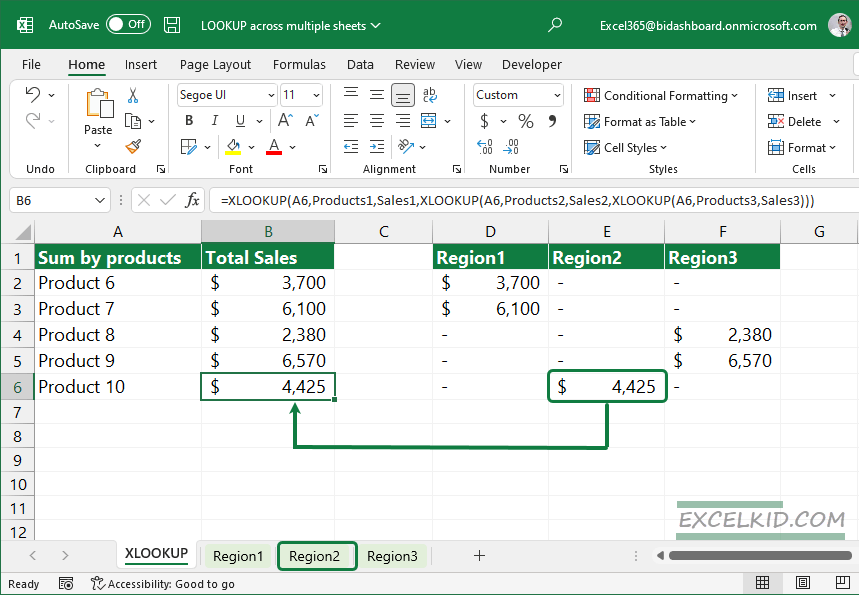Process Data Across Excel Sheets: Simplified Method

Managing data efficiently across multiple Excel sheets can often seem like a daunting task. However, with the right approach, it can become a seamless part of your data management strategy. In this blog post, we'll guide you through a simplified method to process data across different sheets in Excel, ensuring you can enhance productivity and maintain accuracy.
Understanding Excel’s Data Processing Capabilities

Excel is not just a tool for data entry; it’s a powerful platform for data analysis and management. Its capabilities include:
- Data Consolidation: Combining data from multiple sources into one.
- Data Filtering: Sorting and displaying specific data sets.
- Advanced Formulas: Using functions like VLOOKUP, INDEX, and MATCH for data lookups.
Step-by-Step Guide to Process Data Across Excel Sheets

1. Preparing Your Workbook

Start by ensuring your Excel workbook is set up for efficient data processing:
- Create or open a workbook.
- Name your sheets descriptively for easy navigation. For instance, “Sheet1” can be renamed “Inventory”, “Sheet2” as “Sales”, and so on.
- Organize data in tables for enhanced readability and use. To create a table, select your range of data, go to the Insert tab, and click Table.
💡 Note: Naming sheets logically helps in referencing them in formulas.
2. Consolidating Data

Consolidating data involves bringing together information from different sheets into a summary sheet. Here’s how:
- Create a new sheet called “Summary” for consolidated data.
- Use functions like SUMIF, COUNTIF, or the Data > Consolidate tool:
- SUMIF can sum values from one sheet where certain conditions are met:
- Count the number of sales of a specific product:
- The Data Consolidation feature can sum or average values from several sheets:
=SUMIF(Inventory!A:A, “Product A”, Inventory!B:B)
=COUNTIF(Sales!A:A, “Product B”)
🔍 Note: The Consolidate feature can be accessed through the Data tab.
3. Using Advanced Formulas for Data Lookup

Let’s explore how to look up and retrieve data from different sheets:
- VLOOKUP: Lookup a value in a table to return a corresponding value from another column.
- INDEX/MATCH: This combination can replace VLOOKUP for more flexible lookups across multiple sheets.
Here are two examples:
VLOOKUP:
=VLOOKUP(“Product ID”, Inventory!A2:D100, 2, FALSE)
This formula looks up the “Product ID” in the Inventory sheet and returns the product name.
INDEX/MATCH:
=INDEX(Inventory!B2:B100, MATCH(“Product ID”, Inventory!A2:A100, 0))
This formula achieves the same result but is more versatile when dealing with dynamic data ranges.
4. Automating Repetitive Tasks with Macros

For frequent tasks, consider recording macros to automate the process:
- Go to the Developer tab and click Record Macro.
- Perform the task you wish to automate.
- Stop recording and assign a keyboard shortcut or a button to run your macro.
📝 Note: Enabling the Developer tab might require going to File > Options > Customize Ribbon and checking the Developer option.
Conclusion: Efficiency Through Simplification

By implementing these steps, you’ve learned how to efficiently manage and process data across multiple Excel sheets. Whether it’s through data consolidation, using advanced formulas like VLOOKUP or INDEX/MATCH, or automating tasks with macros, you now possess the tools to simplify your data handling processes. Remember, the key to mastering Excel is not only in understanding its functions but also in applying them consistently and logically to your data management needs.
How can I copy data from multiple sheets at once?

+
To copy data from multiple sheets, use the Data Consolidate feature or write a VBA script to loop through each sheet, copy the data, and paste it into a summary sheet.
What’s the difference between VLOOKUP and INDEX/MATCH?

+
VLOOKUP searches for a value in the first column of a range and returns a value in the same row from another column. INDEX/MATCH is more flexible; INDEX retrieves the value at the intersection of a row and column, while MATCH finds the row or column position within a range. This combination can look up both horizontally and vertically, and it’s less prone to errors if columns are inserted or deleted.
How do I ensure data integrity across multiple sheets?

+
To maintain data integrity, consider using data validation rules, cross-sheet formulas for checks, regular data auditing, and version control where possible. Also, avoid manual data entry where automated processes can take over to reduce human error.
Can macros be shared with others or are they workbook specific?

+
Macros are embedded in the workbook by default, but they can be shared. You can export the VBA module or create an Excel add-in (.xlam file) that others can install to access the macros across different workbooks.